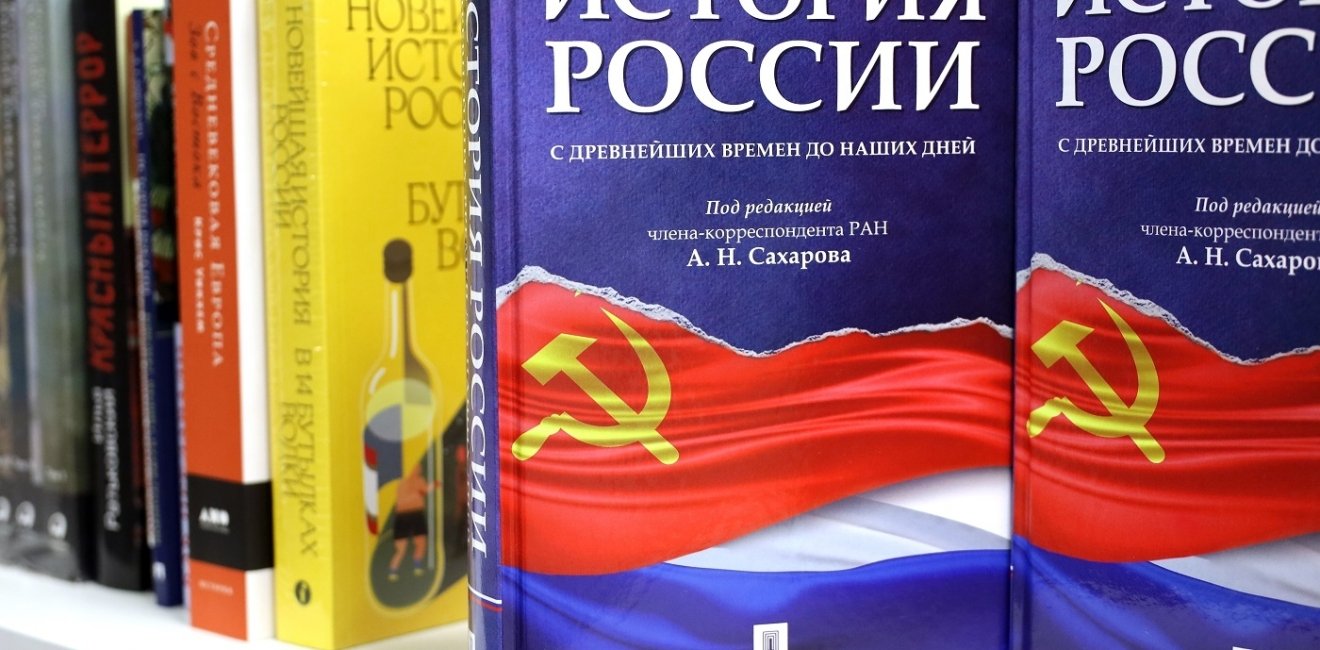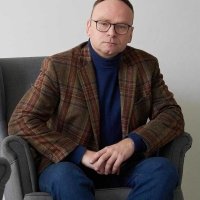
A blog of the Kennan Institute
During year 24 of Putin’s rule, and more than a year into the war with Ukraine, the Russian authorities have presented the world with their official ideology. It comes in the form of a course syllabus titled “The Foundations of Russian Statehood.” It is a mandatory course that will be included in the curricula of all of Russia’s universities.
Now it’s official—Putinism has an ideology. What does that mean in practical terms, other than proving earlier observations that the regime lacked an officially approved ideology?
Conservative Thought + Civilizational Approach = Ideology
“It is necessary to present national history as a gradual overcoming of fragmentation (not only feudal but also broader, clan-based) and a transition to an imperial and civilizational project,” write the authors of the syllabus. The course’s ideological foundation, they continue, “should include not only a civilizational approach and conservative thought but also neglected or underestimated currents (such as communitarianism, solidarity), as well as Russian religious philosophy.”
Essentially, the proposed concept of modern Russian ideology appears as a recycled thesis, namely, that Russia is a separate civilization in its own right. No one should lecture this civilization. Instead, it should serve as an example, a guide for the rest of the world. The stress on “conservative thought” alongside the course’s “civilizational approach” confirms that, ideologically and politically, the Russian authorities see themselves on the conservative, right-wing end of the political spectrum. The Kremlin’s version of right-wing conservatism leaning toward clericalism is not a program of one of the parties but an overall teaching that the administration purports to instill in Russia’s youth.
The new subject will be taught to students of all majors in the first semester of their first year at university. This means that regardless of the students’ course selection, all will begin their higher education with ideological indoctrination.
Indoctrinating Youth for Russia’s War Regime
Neither the right-wing conservative philosopher Alexander Dugin, who has pitched himself as Putin’s premier ideologue, nor the writer and war enthusiast Zakhar Prilepin, who also has presented himself as a leading pro-Kremlin intellectual, is among the course’s authors. Instead, the lead author is a relative unknown, Andrey Polosin. The fifty-three-year-old psychologist and political scientist spent his entire career as a campaign manager and a government relations point man under Sergey Kirienko, the deputy head of Putin’s administration responsible for political campaigns and human resources. Polosin has been recently appointed deputy rector of RANEPA, Russia’s main school of government.
The regime’s ideological program is thus produced by a political hack rather than a historian or a social scientist. This alone should prompt skepticism about the program’s intellectual content. Essentially, the project’s main purpose is to fill the Putin regime’s ideological void. The war with Ukraine, or more precisely its apparent failure and protracted nature, raises questions even among the most loyal citizens of Russia regarding the purpose for which people are dying and why it was not possible to avoid the war and self-isolation from the West, including its most attractive and familiar manifestations and achievements.
For two decades now, the Kremlin leadership has shown little interest in Russia’s younger generations. There was a pragmatic reason behind this neglect. Prior to the war with Ukraine, the Putin regime legitimized itself through electoral campaigns that purported to demonstrate to the citizenry and the world that Putin enjoyed the support of a majority of Russians. Young citizens showed little enthusiasm for Putin’s managed elections however, and, in an aging country, were not the campaign managers’ main focus.
The transition of the war with Ukraine into a protracted phase exposed these problems. Putin needed not only passive loyalty from elderly Russians but also the readiness of Russian youth to go to war or, at the very least, to continue working in Russia to ensure the functioning of the economy’s most promising sectors. However, it was the youth, especially young professionals, who rushed not to recruitment centers but to the border checkpoints. Hundreds of thousands of Russian citizens, primarily young, educated, and successful, have left the country since the beginning of the war. According to opinion surveys, the new generations of students are looking in the same direction. It is these young individuals that the course’s authors and political backers intend to reeducate.
After the publication of the course materials, many recalled the Soviet Union’s main ideology course, on scientific communism. This “science” showed up in Soviet curricula relatively late, during the second half of the 1960s, solely thanks to the Communist Party’s chief ideologue of the time, Mikhail Suslov. In other words, for the first forty years of its existence, the USSR, while being an ideology-based dictatorship, lived without scientific communism as a separate discipline. And herein lies the main difference between Suslov’s scientific communism and Polosin’s “scientific Putinism.”
The Soviet ideologue did not compile his course on the back of an envelope as a response to an urgent political expediency. He recorded and standardized the Soviet Marxist-Leninist scholasticism that had existed before. Moreover, Suslov was solving a difficult strategic problem. After Nikita Khrushchev’s limited break with Stalin’s legacy, Soviet society and communist movements worldwide were asking questions about the USSR’s party line.
Stalin was a living classic. His word was decisive in all disputes, from economic to linguistic matters, and as long as he was alive, no one dared ask ideological questions. But after Stalin’s demise things changed. Neither Khrushchev nor his successor, Leonid Brezhnev, possessed the old dictator’s authority. It was then that Suslov put together his course, which was essentially a lengthy retelling of Stalin’s essay “On Historical and Dialectical Materialism,” lifted from the Short Course of the History of the Communist Party, the early Soviet Union’s main political guidebook.
Explaining a War
What conclusions can be drawn from all of the above? First, Putin and his regime have failed to develop a coherent ideology. Putin’s political managers offer a mixed bag of contemporary slogans and quotations from past thinkers and call it a piece of scholarship. The one difference from scientific communism is that the course quotes conservative and religious thinkers instead of Karl Marx and Vladimir Lenin.
Second, the course’s mission is not so much to persuade opponents of the regime as to indoctrinate younger generations, combined with poorly concealed intimidation. After all, if the values and norms of the regime are fixed, it becomes easier to identify and punish those who violate them.
Third, the hustle and bustle on the ideological front refutes the popular belief that Putin and even the entire Russian society initially had some ideology that manifested in aggression against Ukraine. The reality is completely different: the war did not start for ideological reasons. Instead, an ideology had to be hastily created that would justify and explain a war that has been going on for over a year.
The opinions expressed in this article are those solely of the author and do not reflect the views of the Kennan Institute.
Author

Kennan Institute
After more than 50 years as a vital part of the Wilson Center legacy, the Kennan Institute has become an independent think tank. You can find the current website for the Kennan Institute at kennaninstitute.org. Please look for future announcements about partnership activities between the Wilson Center and the Kennan Institute at Wilson Center Press Room. The Kennan Institute is the premier US center for advanced research on Eurasia and the oldest and largest regional program at the Woodrow Wilson International Center for Scholars. The Kennan Institute is committed to improving American understanding of Russia, Ukraine, Central Asia, the South Caucasus, and the surrounding region through research and exchange. Read more

Explore More in The Russia File
Browse The Russia File
Chechnya as a Model of Modern Russia

Russia’s Indigenous Communities and the War in Ukraine

Gas and Power in a Changing US–Russia Relationship


